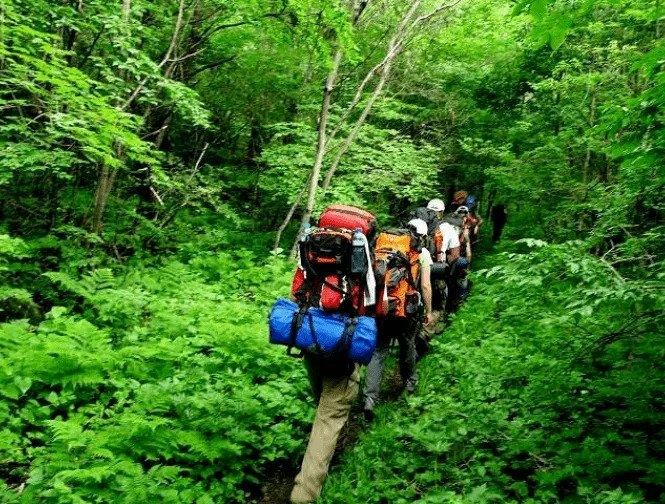
Somewhere deep down, many of us have a desire to step out completely and leave the civilized world behind for a wilderness adventure. Smartphones, tablets, smartwatches, ready meals and running water are just a few of the many comforts that the modern world has in store for us and which push us back into our comfort zones again and again. Many of our readers probably know only too well the moment when the smartphone shows the last percent of the battery level and you panic, as if it were about the last drop of drinking water. In the modern world, we all know the solution to this: the charging cable. But what about the last drop of drinking water? How many of us would know how to get clean drinking water in the wild?
How do you start a fire without a lighter and what do you eat when the last industrially manufactured can of beans is gone? These are the questions to be answered when it comes to outdoor adventure at its purest. Completely isolated from civilization and its consumer goods. Man and nature – the oldest connection in world history. In this article you will learn the 5 ultimate survival tricks for your back to the roots wilderness adventure. But before that, we have to go through some important organizational points together.
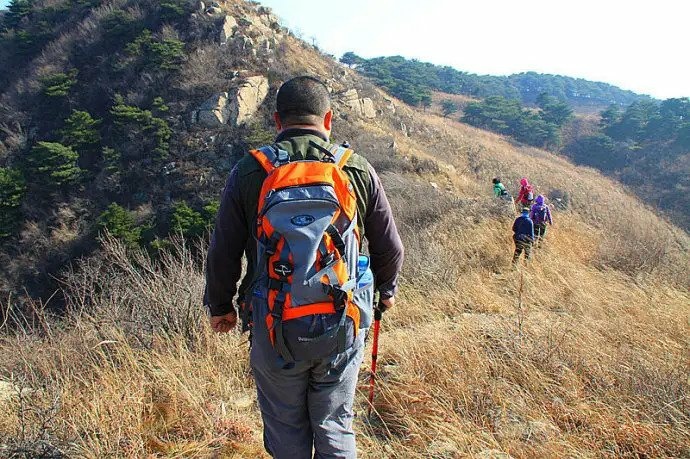
The Perfect Place
Before you can begin your survival trip, you need to decide where your adventure will take you – and that’s easier said than done. Because how far should it really go out into the open wilderness? How quickly should the exit be possible if the worst comes to the worst? The answers to these questions largely depend on the location of your survival trip. How far your survival adventure goes, you have to decide based on your experience. In many places there is the possibility to stock up on groceries again promptly from outside. In other places that would mean a full day’s march. In that case you must be able to organize your meals on the spot. You will also find numerous untouched spots that create a pure survival feeling in Germany and Europe, but it is important that you research your destination carefully in advance and obtain the important information in relevant forums and, if necessary, from the authorities, because there are countries in which wild camping is permitted, while in other countries it is only permitted at designated locations due to applicable regulations is. The weather conditions of your destination are also decisive for the course of your survival trip. In Asia and Africa in particular, you should find out about the weather conditions in your time period, since different survival and outdoor equipment is of course required at times of high precipitation than at times of low precipitation and high temperatures. because there are countries in which wild camping is permitted, while in other countries it is only permitted in designated locations due to applicable regulations. The weather conditions of your destination are also decisive for the course of your survival trip. In Asia and Africa in particular, you should find out about the weather conditions in your time period, since different survival and outdoor equipment is of course required at times of high precipitation than at times of low precipitation and high temperatures. because there are countries in which wild camping is permitted, while in other countries it is only permitted in designated locations due to applicable regulations. The weather conditions of your destination are also decisive for the course of your survival trip. In Asia and Africa in particular, you should find out about the weather conditions in your time period, since different survival and outdoor equipment is of course required at times of high precipitation than at times of low precipitation and high temperatures.
The terrain in particular changes with high rainfall and may bring a different type of adversity and danger. A moderate climate is recommended for your first survival trips. There must be people with whom you clarify in advance when you will give a sign of life – otherwise you are taking too great a risk. So if your trip is to last several days, you have to organize exactly when your hiking route crosses smaller towns, from where you can send an SMS or a short e-mail as a sign of life with your current position. This allows family and friends to take timely action if they don’t receive a sign from you within a specified period of time. Planning the location also includes finding out about the natural conditions on site. What plants grow there? Which of these plants can you eat and which ones might even be poisonous? In addition, you must get 100% education on the wildlife at your location. It is advisable to contact the forest authority of the selected region and find out if there are bears, wolves and maybe poisonous species there. Normally, wildlife will avoid human contact, so during your hikes, singing and talking loudly with your partner should allow bears and other wildlife to hear you early and move away from your perimeter. Otherwise it could be Surprising these animals in their natural environment and a surprise with a bear in the wild is really not what we all dream of, especially when cubs are around and the protective instinct kicks in. But even in this case, it is important to remain calm. As difficult as that may sound, running away only awakens the hunting instincts of wild animals and is not necessarily characterized by equal opportunity on their terrain. Rather, it is about bringing the animal into a defensive position by making noise and putting it into reverse gear yourself. But: the danger of being attacked by wild animals is rare and caution and preparation are still required. As difficult as that may sound, running away only awakens the hunting instincts of wild animals and is not necessarily characterized by equal opportunity on their terrain. Rather, it is about bringing the animal into a defensive position by making noise and putting it into reverse gear yourself. But: the danger of being attacked by wild animals is rare and caution and preparation are still required. As difficult as that may sound, running away only awakens the hunting instincts of wild animals and is not necessarily characterized by equal opportunity on their terrain. Rather, it is about bringing the animal into a defensive position by making noise and putting it into reverse gear yourself. But: the danger of being attacked by wild animals is rare and caution and preparation are still required.
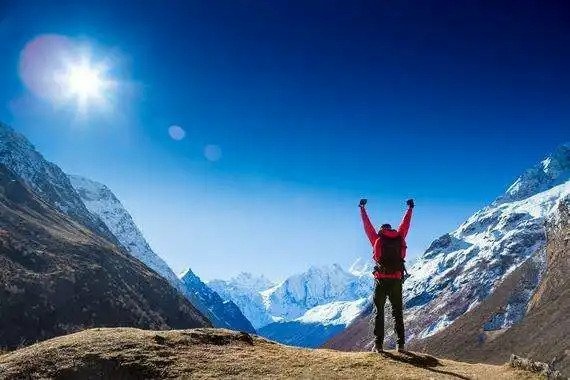
The Perfect Gear
It only makes sense to pack your outdoor backpack once you know your travel destination, because which outdoor equipment takes up the limited space in your backpack essentially depends on the terrain and the duration of your survival trip. A survival trip is, as the name suggests, characterized by the focus on surviving in the great outdoors – so it’s not about comfort, but about functional outdoor equipment that is robust and versatile. A sharp knife with a fixed blade is part of the basic outdoor equipment. Even if a hand ax would certainly do the trick – a sharp outdoor knife takes up little space and gives you a certain level of comfort that you don’t necessarily have to do without to experience a real survival adventure. A tightly sealable drinking bottle is essential and an integral part of good basic equipment, because once you have found a clean water source, you should at least have enough to go to the next clean source – in this context, despite any thirst for adventure, you should refrain from taking too many risks – after all a survival trip is primarily about survival. In addition, every good survival kit includes a water disinfectant. This can be in the form of a filter or in the form of tablets. Of course, you could also fill a sock with pebbles, sand, blades of grass and charcoal and let the water run through this “natural filter” – but that assumes that the sock is still reasonably clean. As a rule, the following applies: clear and fast-flowing water is safe to drink in most cases. You should stay away from stagnant and cloudy water as much as possible, unless you can boil it.
A list of some essential items for your survival kit:
- Magnesium rod/ matches (stow away waterproof)
- Map/Compass/GPS
- Flashlight with good illumination and enough batteries
- Knife
- Nylon cord or binding wire (at least 10 m)
- Means for sterilizing water
- Uscamel binoculars (better observe distant sensitive insects, shy or dangerous animals)
- Candle (wrapped in aluminum foil)
- plastic tarpaulin
- Snap hook/safety pin
- Can/container (preferably tightly closed with at least 500 ml)
- Fishing equipment (fishing line can be used in many ways)
- Light stick, flare or smoke body for distress signals
- Sewing and repair kit
- Sterile pads, plasters and tape
- Neosporin against skin and eye infections
- Aspirin and anti-diarrhea (charcoal may also help)
This list is only intended as a guide, because what is ultimately added depends essentially on your experience and your carrying capacity. It is therefore an advantage to be on the road with several people, as this means that ample reserves and equipment can be distributed over several shoulders.
Of course, the right outdoor equipment is not just lying around in every supermarket. There are special survival shops, outdoor shops and even army shops that offer professional and proven survival equipment. The advantage of special equipment is that these products are developed by professionals and are primarily functional and robust. A surcharge compared to conventional products can be justified by the fact that professional outdoor equipment usually provides many years of faithful service.
Your outdoor clothing is a decisive factor in how your survival trip goes, because there is not much room for selection in your outdoor backpack apart from the basic equipment.
So there are certain criteria that your outdoor clothing must meet in order to meet the changing conditions on your trip. Your outdoor clothing must be functional, hard-wearing and quick-drying. In addition, the textiles must be breathable and sweat-regulating so that you are not permanently wet with sweat, which would make you more susceptible to cold. Of course, the choice depends very much on the season (temperatures) and the expected precipitation. Nevertheless, as with any physical activity outdoors, the onion principle applies: several breathable layers of clothing that you can put on and take off as needed to be prepared for both cold and heat. In this context, water-repellent softshell jackets are combined with breathable and high-closing ones Fleece jackets recommended. Softshell jackets in particular provide good protection in low precipitation and wind and are still quick to stow away and easy to transport. In the evenings, a warm high-necked shirt in front of a cozy campfire can protect your neck and neck area from the cold. Functional pants with stretch give you the mobility you need, dry quickly and can be turned into shorts in just a few simple steps. In addition, with their many pockets, they provide enough storage space for all the little things that are indispensable on a survival trip and should be at hand at all times. Don’t forget a light rain jacket that can be rolled up and stowed in a backpack.
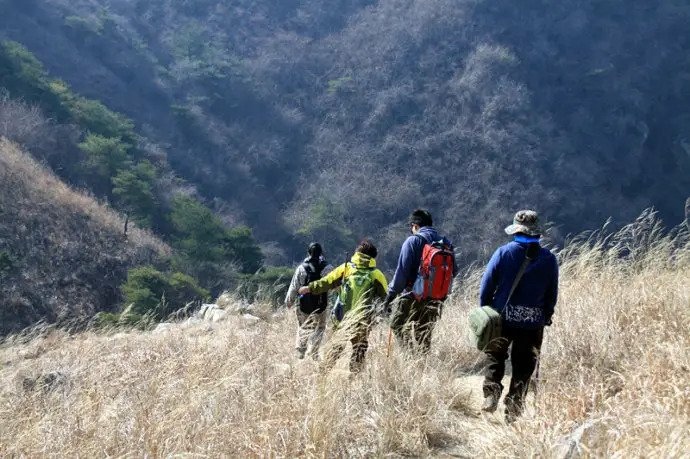
Now we come to the “5 Survival Tips for Outdoor Adventurers”.
That depends on how extreme you want your survival trip to be, which in turn depends on your outdoor experience. Theoretically, humans can survive up to four weeks without food, but only if calorie consumption is reduced to a minimum. However, a survival trip is not about vegetating, but about a lot of movement. Therefore, the topic of food is important and decisive for the length and intensity of the survival trip. Even if you intend to eat 100% from nature, a drinking bottle and water filter are absolute must-haves. A botany book can’t hurt either, and will help you identify the edible plants correctly. These include the comfrey plant, which contains an above-average amount of starch and gives you strength quickly, to continue your survival trip. You can also eat spleen, as it is not too bitter. Plantain, in turn, has healing and disinfecting properties. In Europe in particular, there are almost 2,000 edible wild plants and, especially in autumn, nature offers a 7-course menu of fruits, berries and roots that are wonderfully edible and give you energy.
Eating and Drinking:
But meat is also within the realm of possibility: if you reach lakes or rivers on your survival trip, you can use your fishing line to make a fishing rod in no time at all, and even a homemade spear can be useful for catching dinner. Fish is best eaten cooked. Of course you can grill the fish over an open fire on a branch – for those who like it a little more delicate, cooking materials from camping equipment are recommended. A small pan, a pot and some cutlery may not turn the wilderness into a 7-star restaurant, but they give you great comfort and everything tastes twice as good. Fuel for your natural stove is dry wood from nature. But more on that under Tip 2.
In any case, you should have an emergency ration of canned and dry food ready, because the wilderness is unpredictable.
Making Fires in the Wilderness
After a mile-long hike across the wilderness, there is nothing better than sitting around a campfire with your buddies, warming up and listening to the crackling of branches and twigs in the stillness of nature.
As easy as it sounds, making a fire in the wild requires preparation and, above all, responsibility. Basically, you should only light a fire at your camp site and it is important to choose a hard surface, which you should limit with dry stones. It’s important that the rocks you choose to surround your campfire with are dry, because wet rocks can crack from heat stress and become quite dangerous. The goal of a good campfire is for the fire to generate a lot of heat, which is emitted to the sides, with little smoke so that there is a cozy gathering. In most cases, the reason for a lot of smoke development is damp wood and if the fire does not generate enough heat. It is therefore important that you only eat “dead”, i.e. use completely dry wood for your fire. Make sure that enough oxygen can get to the center of the fire at all times and always have enough firewood on hand so that the fire can develop its full heat.
Basically, there are 4 different types of fire for survival trips, all of which we want to explain in more detail in future blog posts. The pyramid fire, which consists of three layers, is recommended as an all-rounder among the types of fire:
- I. Tinder, small branches and dry grass and leaves as the easily combustible center
- II. Surrounded by medium-sized branches arranged in a pyramid shape
- III. Therefore, in turn, large branches as the outermost layer of the pyramid
Make sure beforehand that you have carefully cleared the area around your campfire of branches and leaves so that the fire cannot spread uncontrollably. Not every fire fulfills the same function. For example, a star fire is more suitable for cooking, whereas a pyramid fire provides excellent heat.
It is advisable to use matches for lighting, which you hopefully have been able to keep dry in your survival backpack. You have to be economical here, because you only have a limited amount of matches with you. In order for the first match to work, you should turn with your back to the wind and place the fire as far down in the center as possible and then blow lightly to ensure a good supply of oxygen. A magnesium stick is also a wonderful way to start a fire. As soon as your campfire is burning, you shouldn’t move too far from the fireplace so that you can react at any time.
Finally, when it is bedtime, the fire must be carefully extinguished. It is advisable to let the fire burn down completely. The remaining embers can then simply be extinguished with earth, sand and a little water. If for any reason you have to end your survival camp early and don’t have time to let the campfire burn down, you should remove the thick branches from the burning fire and extinguish them separately. Then you should extinguish the fireplace again with earth, sand and water until there is no more smoke and no more embers.
Warm and Dry Without Fire
On your trip, there might not be a permit to light a fire. In this case, you can use a camp stove to cook. You can find these in shops with camping accessories and outdoor equipment, but the small flame of the camping stove will hardly be enough to warm you and your friends. A hot meal at least warms you up from the inside out. To keep you warm from the outside, you should spread a thick layer of dry leaves and grass on the ground to insulate moisture and cold that comes from the ground as much as possible. With a good sleeping bag, you can easily spend a cozy night on this natural bed.
Overnight Stay in the Wilderness
Especially at night, the wilderness harbors a breathtakingly diverse background noise that acts like therapy on our mind. But not only acoustically, but also visually the wilderness enchants with a night sky full of stars and shooting stars that would hardly be visible in the city due to the exposure. In principle, the temperatures should be above 10 degrees and of course it is important that no precipitation is to be expected, because that quickly becomes uncomfortable in the wilderness and even a waterproof bivy sack does not necessarily remain cozy in heavy precipitation. In general, try to look for natural shelters like rocky outcrops and caves for your survival camp roost. You can also build a tent by tying a rope or heavy duty twine between two trees and laying a tarp over them, stabilizing with rocks or branches on the sides. A pad under the sleeping bag makes sense in any case and a sleeping pad is suitable to insulate cold and moisture from the ground. Be careful not to build your night quarters on top of an anthill, and try not to sleep near swamps, bodies of water, and puddles, as the humidity attracts mosquitoes, which can become quite uncomfortable. Find out about dangerous wild animals, poisonous insects and snakes at your survival destination and add the necessary emergency utensils to your outdoor equipment. A pad under the sleeping bag makes sense in any case and a sleeping pad is suitable to insulate cold and moisture from the ground. Be careful not to build your night quarters on top of an anthill, and try not to sleep near swamps, bodies of water, and puddles, as the humidity attracts mosquitoes, which can become quite uncomfortable. Find out about dangerous wild animals, poisonous insects and snakes at your survival destination and add the necessary emergency utensils to your outdoor equipment. A pad under the sleeping bag makes sense in any case and a sleeping pad is suitable to insulate cold and moisture from the ground. Be careful not to build your night quarters on top of an anthill, and try not to sleep near swamps, bodies of water, and puddles, as the humidity attracts mosquitoes, which can become quite uncomfortable. Find out about dangerous wild animals, poisonous insects and snakes at your survival destination and add the necessary emergency utensils to your outdoor equipment. water and puddles, as the humidity attracts mosquitoes, which can become quite uncomfortable. Find out about dangerous wild animals, poisonous insects and snakes at your survival destination and add the necessary emergency utensils to your outdoor equipment. water and puddles, as the humidity attracts mosquitoes, which can become quite uncomfortable. Find out about dangerous wild animals, poisonous insects and snakes at your survival destination and add the necessary emergency utensils to your outdoor equipment.
Orientation in Nature
We all know the saying “never wash without soap”. For city people, this saying is often the only mnemonic to derive the cardinal points. It’s much easier with a compass, because the magnetic needle in a compass always points north-south. But how do you find your way if you don’t have a compass or a modern navigation device with you? Basically, a very simple principle applies: Keep your eyes open and perceive your surroundings. As simple as that may sound – in the modern world, where sat navs, smartphones and now even smartwatches are constantly pulling us from the real to the virtual world, it is no longer so self-evident that we are consciously aware of our surroundings. Many young people sometimes can’t even find their way back home in their hometown without a navigation system, whereas older generations get along on motorways and roads without any modern help because they come from a time when without modern sat navs and smartphones it was necessary to keep your eyes open and memorize routes and signs. For people who are unfamiliar with nature and newcomers to the outdoors, trees and landscapes are simply more similar than streets and houses. This is due to a superficial view of the terrain, which it is essential to train off.
If there is no compass in the outdoor equipment (which of course should not be the case), the sun should first be chosen as a point of reference, since in our latitude it rises roughly in the east and is in the south at midday and in the following hours until sunset in the sun moved west. Trees can also help with orientation, because the wind in Europe usually blows from the west, which can be observed on the easterly slope, especially on free-standing trees, and moss also grows on the weather side of the tree – i.e. west. An even simpler method is to look for landmarks on your survival trip. For example, a tree that was struck by lightning (by the way, you can often find coal here), bizarre rock formations and maybe even signs.
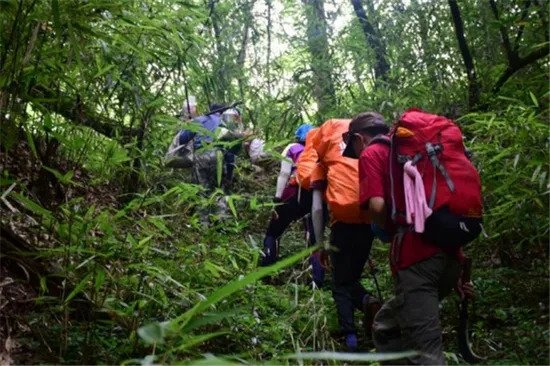
Conclusion
A survival trip requires a lot of preparation and adventure expertise. Under no circumstances should you, as a newcomer, be tempted to act irresponsibly by the thrill of it. Take part in survival training with experts and get to know new people on these survival weekends who share the same interests with you and may even be on your first independent outdoor trip. Your unforgettable survival trip will not stand with professional training and the right outdoor equipment more towards.
Original source: https://uscameloptics.pixnet.net/blog/post/74787754-5-survival-tips-outdoor-adventure
Related articles you may like:
- Binoculars Buying Tips for Choosing the Right Binoculars
- The Best Binoculars for Bird Watching
- How to Choose an Ideal Pair of Binoculars for Hiking?
- Uscamel 10×42 HD Compact Binoculars for Easier Nature Observation
- The Right Binoculars for Bird Watching
- Monocular or Binocular, Which is Better?
- Which Binoculars for Which Purpose? An Overview with Recommendations


